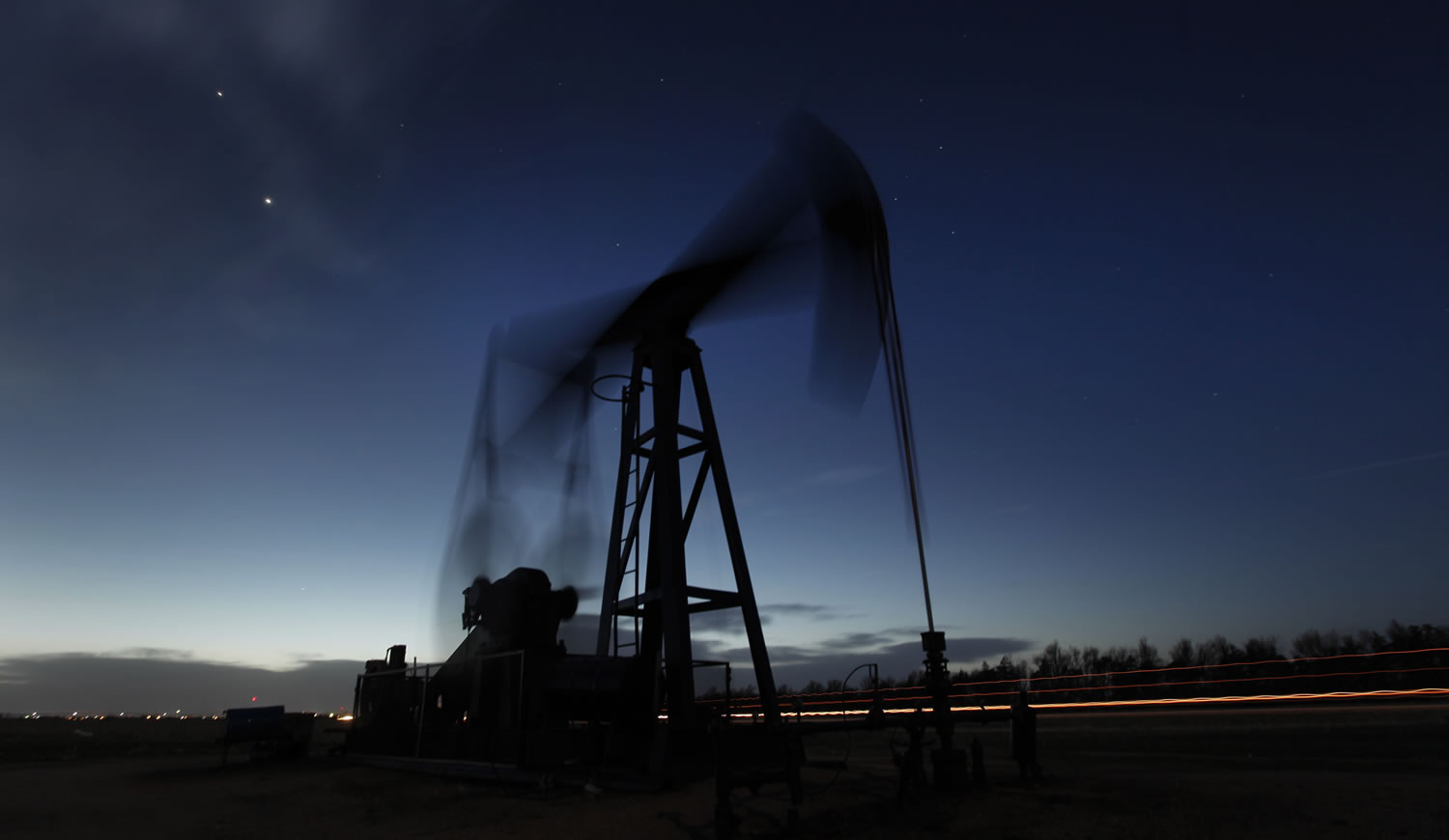NEW YORK — U.S. oil output is surging so fast that the United States could soon overtake Saudi Arabia as the world’s biggest producer.
Driven by high prices and new drilling methods, U.S. production of crude and other liquid hydrocarbons is on track to rise 7 percent this year to an average of 10.9 million barrels per day. This will be the fourth straight year of crude increases and the biggest single-year gain since 1951.
The boom has surprised even the experts.
“Five years ago, if I or anyone had predicted today’s production growth, people would have thought we were crazy,” says Jim Burkhard, head of oil markets research at IHS CERA, an energy consulting firm.
The Energy Department forecasts that U.S. production of crude and other liquid hydrocarbons, which includes biofuels, will average 11.4 million barrels per day next year. That would be a record for the U.S. and just below Saudi Arabia’s output of 11.6 million barrels. Citibank forecasts U.S. production could reach 13 million to 15 million barrels per day by 2020, helping to make North America “the new Middle East.”
The United States will still need to import lots of oil; Americans use 18.7 million barrels per day. But thanks to the growth in domestic production and the improving fuel efficiency of the nation’s cars and trucks, imports could fall by half by the end of the decade.
The increase in production hasn’t cut prices at the gas pump, and they aren’t expected to drop much for the next few years.
Still, producing more oil, and importing less, is a significant economic boost.
Businesses that serve the oil industry, such as steel companies that supply drilling pipe and railroads that transport oil, aren’t the only ones benefiting. Homebuilders, auto dealers and retailers in energy-producing states are also getting a lift.
IHS says oil and gas drilling, which already supports 1.7 million jobs, will lead to the creation of 1.3 million jobs across the U.S. economy by the end of the decade.
“It’s the most important change to the economy since the advent of personal computers pushed up productivity in the 1990s,” says economist Philip Verleger, a visiting fellow at the Peterson Institute of International Economics.
The major boost for domestic production is a new ability to squeeze oil out of rock once thought too difficult and expensive to tap. Drillers have learned to drill horizontally into long, thin seams of shale and other rock that holds oil, instead of searching for rare underground pools of hydrocarbons that have accumulated over millions of years.
Drillers crack the rock open by pumping water, sand and chemicals into the ground at high pressure, a process known as hydraulic fracturing, or “fracking.”
While fracking has unlocked enormous reserves of oil and gas, it has also raised concerns that contaminated water produced in the process could leak into drinking water.
The surge in oil production has other roots, as well:
o A long period of high oil prices has given drillers the cash — and the motivation to spend it — required to develop new techniques and search new places for oil. Over the past decade, oil has averaged $69 a barrel. In the previous decade, it was $21.
o Production in the Gulf of Mexico, which slowed after BP’s 2010 well disaster and oil spill, has begun to climb again. Huge recent finds there are expected to help growth continue.
o A natural gas glut forced drillers to dramatically slow natural gas exploration beginning about a year ago. Drillers suddenly had plenty of equipment and workers to shift to oil.
But Saudi oil is cheap to tap, while fracking is very expensive. If the price of oil falls below $75 per barrel, U.S. drillers will almost certainly begin to cut back.
The International Energy Agency forecasts that global oil prices, which have averaged $107 per barrel this year, will average $89 over the next five years — not a big enough drop to lead companies to cut back deeply.
Nor are they expected to fall enough to bring back the days of cheap gasoline. Still, more of the money that Americans spend at filling stations will flow to domestic drillers, which are then more likely to buy equipment here and hire more U.S. workers.
“Drivers will have to pay high prices, sure, but at least they’ll have a job,” Verleger says.



